#Genus: Sceloporus
Explore tagged Tumblr posts
Text



Range: USA (Arizona, New Mexico, California, Idaho, Nevada, Oregon, Utah, & Washington) & Northern Mexico
#poll#Class: Reptilia#Order: Squamata#Family: Phrynosomatidae#Genus: Sceloporus#Sceloporus Occidentalis#Range: Nearctic#Range: Neotropical#<- not sure if the range extends into Neotropical but I’m tagging it just incase
40 notes
·
View notes
Note
check out this neat little guy i found in a park in northern california! he was iridescent, so cool!
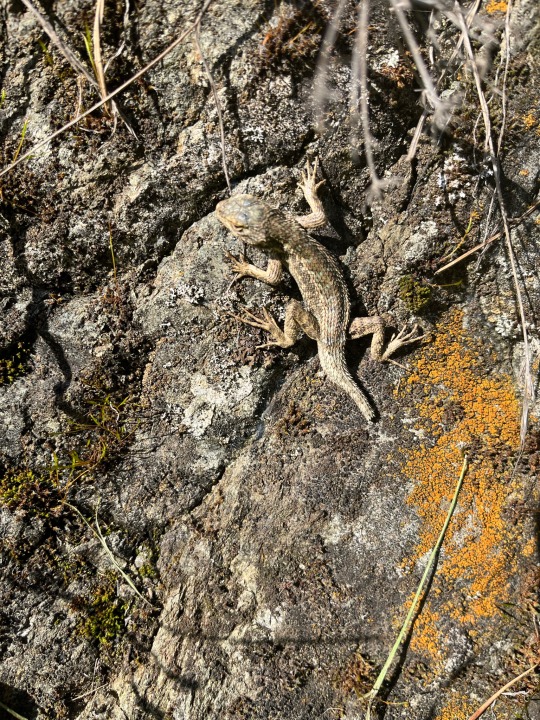
Pretty sure this is a Sceloporus, which are just awesome lizards. Did you get a chance to see the belly? Because it can be just *stunning*.
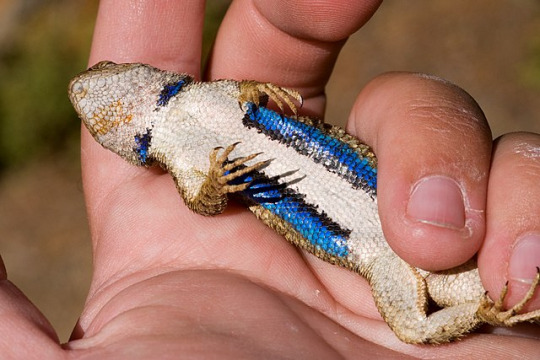
[src]
#lizard#animals#Sceloporus#biology#hidden delights#nature#wildlife#the colouration is a measure of fitness of the males#there is SO much research on this#also the colour is enhanced in individuals that have malaria#for some reason#oh yeah lizards get malaria#I guess that might also be news to a lot of people#not Plasodium but a different genus#and tbh it is utterly bonkers#like there is one species of lizard that is host for two malaria species#but for the one species to infect#the other one has to infect it first#which is just silly#there was a brief moment where I thought my entire career would be lizard malaria#but a shitty potential supervisor who didn't give me the time of day shot down the idea completely#so I did my Bachelor's thesis on ratite birds instead#and here we are
645 notes
·
View notes
Note
I hope location requests are fine? I'd like to request some animals native to mexico like the mexican alligator lizard,the mole lizard,thick billed parrot and west mexican chachalaca
A lot of people only think about the axolotls when theres a lot of cool animals there
Here is a varied selection of nuestra fauna Mexicana...

Oaxacan Dwarf Boa (Exiliboa placata), family Boidae, Oaxaca, Mexico
Endemic to southern Mexico, this small burrowing (fossorial) boa is the only member of its genus.
photograph by Laura Bok

Two cool ass arachnids at the Centro Interpretativo Ecológico in Gomez Farias, Tamaulipas, Mexico
T - Vinegaroon (Mastigoproctus cinteotl), family Thelyphonidae, order Uropygi
B - Tailless Whip Scorpion (Paraphrynus pococki), family Phrynidae, order Amblypygi
photograph by Marco Zozaya

Giant False Brook Salamander (Isthmura gigantea), family Plethodontidae, Veracruz, Mexico
ENDANGERED.
photograph by Laura Bok

Mexican Mole Lizard (Bipes biporus), family Bipedidae, endemic to the Baja California peninsula of Mexico
photograph by Mike Pingleton

Turquoise-browed Motmot (Eumomota superciliosa), family Momotidae, Playa del Carmen, Mexico
photograph by @davidtbryon

Painted Wood Turtle (Rhinoclemmys pulcherrima) juvenile, family Geoemydidae, found throughout much of Mexico and Central America
photograph by theturtlesource.com

Mexican Emerald Spiny Lizard (Sceloporus formosus), male, family Phrynosomatidae, Sierra norte de Oaxaca, Mexico
photograph by Biodiversidad De Oaxaca AC

Pink-headed Warbler (Cardellina versicolor), family Parulidae, found in Chiapas, Mexico and Guatemala
photograph by danialdschumann

Mexican Burrowing Toad (Rhinophrynus dorsalis), family Rhinophrynidae, Veracruz, Mexico
This species is the only extant member of this family.
photograph by Bryce Anderson

Regal Hairstreak (Evenus regalis), family Lycaenidae, Hidalgo, Mexico
photograph by Eduardo Axel Recillas Bautista
383 notes
·
View notes
Text
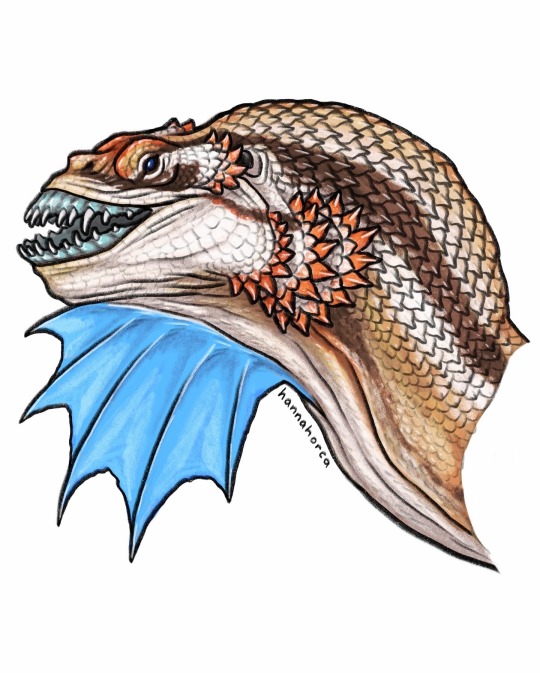
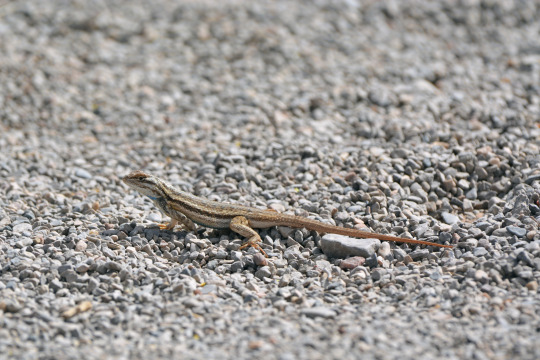
Dragon inspired by the Southwestern Fence Lizard (Sceloporus cowlesi). I’ll be coloring this guy based on a few different spiny lizards in the genus Sceloporus that I’ve photographed!
(Art and photo by me) 🦎
#art#creature design#drawing#illustration#creature art#digital art#dragon art#dragon drawing#dragon#lizard
134 notes
·
View notes
Text

A lizard. At my Aquarium? More likely than you think.
#Phylum: Chordata#Class: Reptilia#Order: Squamata#Family: Phrynosomatidae#Genus: Sceloporus#Sceloporus occidentalis#Western fence lizards#Fence lizards#Lizards#reptiles
0 notes
Video
Sagebrush Lizard by glowworm6a Via Flickr: "The sagebrush lizard (Sceloporus graciosus) is a common species of phrynosomatid lizard found at mid to high altitudes in the western United States of America. It belongs to the genus Sceloporus (spiny lizards) in the Phrynosomatidae family of reptiles. Named after the sagebrush plants near which it is commonly found, the sagebrush lizard has keeled and spiny scales running along its dorsal surface. The sagebrush lizard is similar to the western fence lizard, another Sceloporus species found in the western US. The sagebrush lizard can be distinguished from the western fence lizard in that the former is on average smaller and has finer scales. The keeled dorsal scales are typically gray or tan, but can be a variety of colors. The main (ground) color is broken by a lighter gray or tan stripe running down the center of the back (vertebral stripe) and two light stripes, one on either side of the lizard (dorsolateral stripes). S. graciosus will sometimes have orange markings on its sides. Three regional races of the sagebrush lizard are recognized: the southern sagebrush lizard lives in Southern California, and the western and northern races are found in many western states, including Oregon, Idaho, Colorado, Montana, Washington, New Mexico, Utah, Wyoming, and Arizona" from Wikipedia. Umittila WLR OR.. Eastern Washington Road Trip 04-20-22
#Bird Photographer#Bird Photography#Eastern Washington#Eastern Washington Loop#Nature Photographer#Nature Photography#Oregon#Original Photographer#Photographer on Tumblr#Places#Snively Rd#Tumblr#Umatilla Wildlife Refuge#Vantage#Wildlife Photographer#lensblr#mostly nature#uncropped nature#E. Washington Loop#WA#United States
7 notes
·
View notes
Photo
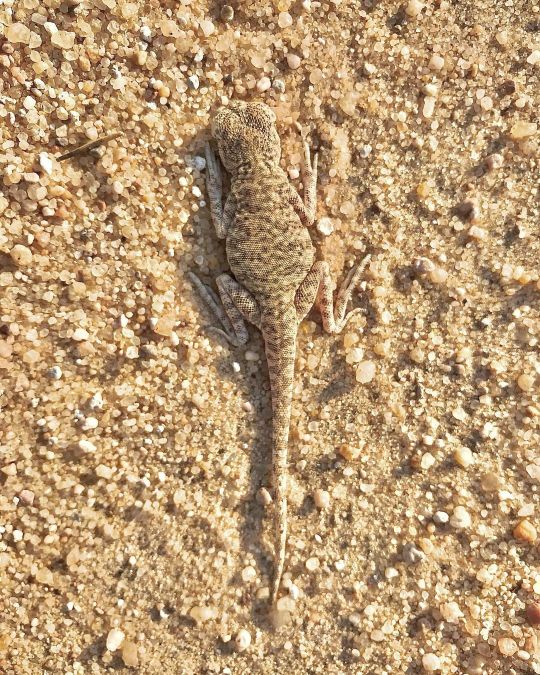
الطُّحَن Toad-headed Agamid (Phrynocephalus) جنس سحالي متوسطة وصغيرة القد من الحرذونيات تحوي على 44 نوع. تعيش في البيئات القاحلة وشبه الجافة المفتوحة في آسيا وشرق أوروبا. هذه سحلية صغيرة بطول إجمالي أصغر من 20 سم. لها رأس خاص للغاية يبدو كما لو كان به درع. يتغير لون طرف الذيل إلى اللون الأسود ويمكن أن يكون ملفوفًا يشبه العقرب ، خاصةً عند الشعور بالقلق. يستخدمون هذه الاستراتيجية لتخويف الحيوانات المفترسة من خلال التظاهر بأنهم مثل عقرب خطير. هذا نوع نهاري يمكن العثور عليه في الكثبان الرملية والمناطق الرملية المفتوحة مع النباتات والصخور. يأكلون الحشرات وغيرها من اللافقاريات الصغيرة. يستخدمون ما يسمى بإستراتيجية الصيد "اجلس وانتظر" ويستخدمون التوجيه المرئي بنشاط للبحث عن الطعام. تضع الإناث البيض ========== @boyahia ========== Phrynocephalus is a genus which includes 44 species of small and medium-sized agamid lizards, commonly called toadhead agamas or toad-headed agamas, that inhabit open arid and semiarid environments of Asia and Eastern Europe. The systematics of this genus are very complicated with many controversial points of view about the unclear phylogeny of this group. All representatives of this genus have adopted the so-called "sit and wait" hunting strategy and they actively use visual orientation when watching for food. In general, the ecological niche and role of Phrynocephalus species in lizard communities of arid environments of Asia are poorly studied, but seem to be similar to that of Phrynosoma, Cophosaurus, Holbrookia, Uta, and Sceloporus in the New World, as well as Moloch in Australia. @hipaae #hipacontest #hipacontest_fromabove (at السالمي كيلو ٤١ - السكراب) https://www.instagram.com/p/Ck58YYCqGuq/?igshid=NGJjMDIxMWI=
0 notes
Text
Fwd: Postdoc: TexasAMU.PhylogeneticClimateModeling
Begin forwarded message: > From: [email protected] > Subject: Postdoc: TexasAMU.PhylogeneticClimateModeling > Date: 7 July 2022 at 08:36:01 BST > To: [email protected] > > > Phylogenetic Climate Modeling of Sympatric Congeners and 3D > Morphometrics – Postdoc Position > > We are seeking a new member of our research community to work in the lab > of Dr. Michelle Lawing (Texas A&M University) and in collaboration with > Dr. Emília Martins (Arizona State University), Dr. Julio Rivera (Henry > M. Jackson Foundation), and Dr. Jaime Zúñiga-Vega (Universidad Nacional > Autónoma de México). You would join a vibrant team of international > researchers investigating the impacts of closely related spiny lizards > (genus Sceloporus) on phenotypic evolution. You will be responsible for > performing research tasks and helping to organize and participate in > broader impacts outlined in a jointly funded NSF award titled “Inferring > the impacts of closely-related species on phenotypic evolution.” See the > NSF grant abstract here: > https://ift.tt/tmeCiOx. Our team includes > faculty, postdocs, graduate students, undergraduate researchers, and > undergraduate students participating in classroom exercises. > > Tasks will include the following: (1) phylogenetic climate modeling, (2) > computational simulations and sensitivity tests, (3) domestic travel to > assist in CT scanning and scoring landmarks, (4) international travel to > assist in fieldwork, (5) preparation of data, code, figures, tables, and > text for manuscripts, (6) mentorship of undergraduate and graduate > students, (7) participation in broader impacts planning (8) travel to > present findings at professional conferences and (9) facilitation of > collaboration through participating in small group and team meetings. > > The ideal candidate would have strong interest in research topics at the > intersection of ecology, evolution, and biogeography, strong > interpersonal skills, proficient knowledge of coding in R, proficient > knowledge of phylogenetic comparative methods, previous experience in > assembling and analyzing large datasets, and previous experience with > analysis of climate data. Adequate knowledge of skeletal morphology of > lizards is a plus. > > The candidate will subscribe to and support our commitment to Inclusion, > Diversity, Equity and Accountability (IDEA). > > Required Documents to Submit: Applicants should upload a single pdf, > which should include: (1) Cover letter stating your interest in this > position, your fit and your previous experience related to this position > description, including scientific goals and interests, (2) CV, (3) Names > and contact information for three persons willing to provide a > recommendation. > > If the description of this position sounds interesting to you, even if > you do not possess all skills listed, we strongly encourage you to apply > to be considered for this opportunity. For further information and to > submit your application see: https://ift.tt/G62J8Pv. We will begin > reviewing applications July 15th and continue until the position is > filled. The ideal start date is September 1st. It is a two-year position > with adequate performance and salary is $50,000 per year with additional > benefits and a budgeted annual raise. > > Please contact Michelle ([email protected]) with any questions. > > -- > > A. Michelle Lawing, PhD (she/her/hers) > Associate Professor > Paleobiology, Evolution, and Climate Lab > Department of Ecology and Conservation Biology > College of Agriculture and Life Sciences > Texas A&M University > 2120 TAMU, WFES 322 > College Station, TX 77843 > > Editorial Board, /Communications Biology/ > An open access journal from Nature Research > > Michelle Lawing
0 notes
Quote
Both of them seem like they may be computer generated animations of something sort of like a squamate (the taxonomic group that includes lizards and snakes). I think they are cgi based on how they move, which isn't especially realistic to real snakes. The first one I saw (the darker looking clip) really reminds me more of a lizard tail than any snake, as the scales lay in a way that isn't how snake scales lay. It's more in line with lizards that have long, spiny tails. There are many genera Takydromas, Sceloporus, Uromastyx, and Cordylus to name a few. The other clip has some similarities with a snake genus called Atheris (African bush vipers), which have these scales that are not totally flat on the body, similar to the clip. Since these videos are so grainy and distorted and with both forward and reversing of the same video clip, it's hard to say exactly what is going on here.
Dr. Sara Ruane, an assistant professor at Rutgers, who is an Herpetologist and has been studying the subject since she was five years old. (Buzzfeed: An Investigation Into What Kind Of Reptile Is In Taylor Swift's Cryptic Videos)
172 notes
·
View notes
Photo

The western fence lizard is a common lizard of Arizona, California, Idaho, Nevada, Oregon, Utah, Washington, Northern Mexico, and the surrounding area. As the ventral abdomen of an adult is characteristically blue, it is also known as the blue-belly. It is a member of the genus Sceloporus. Scientific name: Sceloporus occidentalis Class: Reptilia (at Fresno, California) https://www.instagram.com/p/BvZsZ6SA3Z7/?utm_source=ig_tumblr_share&igshid=1m7vci0o0xxc3
0 notes
Video
Sagebrush Lizard by glowworm6a Via Flickr: "The sagebrush lizard (Sceloporus graciosus) is a common species of phrynosomatid lizard found at mid to high altitudes in the western United States of America. It belongs to the genus Sceloporus (spiny lizards) in the Phrynosomatidae family of reptiles. Named after the sagebrush plants near which it is commonly found, the sagebrush lizard has keeled and spiny scales running along its dorsal surface. The sagebrush lizard is similar to the western fence lizard, another Sceloporus species found in the western US. The sagebrush lizard can be distinguished from the western fence lizard in that the former is on average smaller and has finer scales. The keeled dorsal scales are typically gray or tan, but can be a variety of colors. The main (ground) color is broken by a lighter gray or tan stripe running down the center of the back (vertebral stripe) and two light stripes, one on either side of the lizard (dorsolateral stripes). S. graciosus will sometimes have orange markings on its sides. Three regional races of the sagebrush lizard are recognized: the southern sagebrush lizard lives in Southern California, and the western and northern races are found in many western states, including Oregon, Idaho, Colorado, Montana, Washington, New Mexico, Utah, Wyoming, and Arizona" from Wikipedia Umitilla WLR OR. Eastern Washington Road Trip 04-20-22
#Bird Photographer#Bird Photography#Eastern Washington#Eastern Washington Loop#Nature Photographer#Nature Photography#Oregon#Original Photographer#Photographer on Tumblr#Places#Snively Rd#Tumblr#Umatilla Wildlife Refuge#Vantage#Washington#Wildlife Photographer#lensblr#mostly nature#uncropped nature#E. Washington Loop#WA#United States
6 notes
·
View notes
Text
Fwd: Postdoc: TexasAMU.PhylogeneticClimateModeling
Begin forwarded message: > From: [email protected] > Subject: Postdoc: TexasAMU.PhylogeneticClimateModeling > Date: 7 July 2022 at 08:36:01 BST > To: [email protected] > > > Phylogenetic Climate Modeling of Sympatric Congeners and 3D > Morphometrics – Postdoc Position > > We are seeking a new member of our research community to work in the lab > of Dr. Michelle Lawing (Texas A&M University) and in collaboration with > Dr. Emília Martins (Arizona State University), Dr. Julio Rivera (Henry > M. Jackson Foundation), and Dr. Jaime Zúñiga-Vega (Universidad Nacional > Autónoma de México). You would join a vibrant team of international > researchers investigating the impacts of closely related spiny lizards > (genus Sceloporus) on phenotypic evolution. You will be responsible for > performing research tasks and helping to organize and participate in > broader impacts outlined in a jointly funded NSF award titled “Inferring > the impacts of closely-related species on phenotypic evolution.” See the > NSF grant abstract here: > https://ift.tt/tmeCiOx. Our team includes > faculty, postdocs, graduate students, undergraduate researchers, and > undergraduate students participating in classroom exercises. > > Tasks will include the following: (1) phylogenetic climate modeling, (2) > computational simulations and sensitivity tests, (3) domestic travel to > assist in CT scanning and scoring landmarks, (4) international travel to > assist in fieldwork, (5) preparation of data, code, figures, tables, and > text for manuscripts, (6) mentorship of undergraduate and graduate > students, (7) participation in broader impacts planning (8) travel to > present findings at professional conferences and (9) facilitation of > collaboration through participating in small group and team meetings. > > The ideal candidate would have strong interest in research topics at the > intersection of ecology, evolution, and biogeography, strong > interpersonal skills, proficient knowledge of coding in R, proficient > knowledge of phylogenetic comparative methods, previous experience in > assembling and analyzing large datasets, and previous experience with > analysis of climate data. Adequate knowledge of skeletal morphology of > lizards is a plus. > > The candidate will subscribe to and support our commitment to Inclusion, > Diversity, Equity and Accountability (IDEA). > > Required Documents to Submit: Applicants should upload a single pdf, > which should include: (1) Cover letter stating your interest in this > position, your fit and your previous experience related to this position > description, including scientific goals and interests, (2) CV, (3) Names > and contact information for three persons willing to provide a > recommendation. > > If the description of this position sounds interesting to you, even if > you do not possess all skills listed, we strongly encourage you to apply > to be considered for this opportunity. For further information and to > submit your application see: https://ift.tt/G62J8Pv. We will begin > reviewing applications July 15th and continue until the position is > filled. The ideal start date is September 1st. It is a two-year position > with adequate performance and salary is $50,000 per year with additional > benefits and a budgeted annual raise. > > Please contact Michelle ([email protected]) with any questions. > > -- > > A. Michelle Lawing, PhD (she/her/hers) > Associate Professor > Paleobiology, Evolution, and Climate Lab > Department of Ecology and Conservation Biology > College of Agriculture and Life Sciences > Texas A&M University > 2120 TAMU, WFES 322 > College Station, TX 77843 > > Editorial Board, /Communications Biology/ > An open access journal from Nature Research > > Michelle Lawing
0 notes
Photo

الطُّحَن Toad-headed Agamid (Phrynocephalus) جنس سحالي متوسطة وصغيرة القد من الحرذونيات تحوي على 44 نوع. تعيش في البيئات القاحلة وشبه الجافة المفتوحة في آسيا وشرق أوروبا. هذه سحلية صغيرة بطول إجمالي أصغر من 20 سم. لها رأس خاص للغاية يبدو كما لو كان به درع. يتغير لون طرف الذيل إلى اللون الأسود ويمكن أن يكون ملفوفًا يشبه العقرب ، خاصةً عند الشعور بالقلق. يستخدمون هذه الاستراتيجية لتخويف الحيوانات المفترسة من خلال التظاهر بأنهم مثل عقرب خطير. هذا نوع نهاري يمكن العثور عليه في الكثبان الرملية والمناطق الرملية المفتوحة مع النباتات والصخور. يأكلون الحشرات وغيرها من اللافقاريات الصغيرة. يستخدمون ما يسمى بإستراتيجية الصيد "اجلس وانتظر" ويستخدمون التوجيه المرئي بنشاط للبحث عن الطعام. تضع الإناث البيض ========== @boyahia ========== Phrynocephalus is a genus which includes 44 species of small and medium-sized agamid lizards, commonly called toadhead agamas or toad-headed agamas, that inhabit open arid and semiarid environments of Asia and Eastern Europe. The systematics of this genus are very complicated with many controversial points of view about the unclear phylogeny of this group. All representatives of this genus have adopted the so-called "sit and wait" hunting strategy and they actively use visual orientation when watching for food. In general, the ecological niche and role of Phrynocephalus species in lizard communities of arid environments of Asia are poorly studied, but seem to be similar to that of Phrynosoma, Cophosaurus, Holbrookia, Uta, and Sceloporus in the New World, as well as Moloch in Australia. (at جال اللياح) https://www.instagram.com/p/CNiIf-dAx7Z/?igshid=jyw711faz208
0 notes
Photo

الطُّحَن Toad-headed Agamid (Phrynocephalus) جنس سحالي متوسطة وصغيرة القد من الحرذونيات تحوي على 44 نوع. تعيش في البيئات القاحلة وشبه الجافة المفتوحة في آسيا وشرق أوروبا. هذه سحلية صغيرة بطول إجمالي أصغر من 20 سم. لها رأس خاص للغاية يبدو كما لو كان به درع. يتغير لون طرف الذيل إلى اللون الأسود ويمكن أن يكون ملفوفًا يشبه العقرب ، خاصةً عند الشعور بالقلق. يستخدمون هذه الاستراتيجية لتخويف الحيوانات المفترسة من خلال التظاهر بأنهم مثل عقرب خطير. هذا نوع نهاري يمكن العثور عليه في الكثبان الرملية والمناطق الرملية المفتوحة مع النباتات والصخور. يأكلون الحشرات وغيرها من اللافقاريات الصغيرة. يستخدمون ما يسمى بإستراتيجية الصيد "اجلس وانتظر" ويستخدمون التوجيه المرئي بنشاط للبحث عن الطعام. تضع الإناث البيض ========== @boyahia ========== Phrynocephalus is a genus which includes 44 species of small and medium-sized agamid lizards, commonly called toadhead agamas or toad-headed agamas, that inhabit open arid and semiarid environments of Asia and Eastern Europe. The systematics of this genus are very complicated with many controversial points of view about the unclear phylogeny of this group. All representatives of this genus have adopted the so-called "sit and wait" hunting strategy and they actively use visual orientation when watching for food. In general, the ecological niche and role of Phrynocephalus species in lizard communities of arid environments of Asia are poorly studied, but seem to be similar to that of Phrynosoma, Cophosaurus, Holbrookia, Uta, and Sceloporus in the New World, as well as Moloch in Australia. (at جال اللياح) https://www.instagram.com/p/CM9Jmh0gDnb/?igshid=6krmc6bjk0m5
0 notes
Photo

الطُّحَن Toad-headed Agamid (Phrynocephalus) جنس سحالي متوسطة وصغيرة القد من الحرذونيات تحوي على 44 نوع. تعيش في البيئات القاحلة وشبه الجافة المفتوحة في آسيا وشرق أوروبا. ========== @boyahia ========== Phrynocephalus is a genus which includes 44 species of small and medium-sized agamid lizards, commonly called toadhead agamas or toad-headed agamas, that inhabit open arid and semiarid environments of Asia and Eastern Europe. The systematics of this genus are very complicated with many controversial points of view about the unclear phylogeny of this group. All representatives of this genus have adopted the so-called "sit and wait" hunting strategy and they actively use visual orientation when watching for food. In general, the ecological niche and role of Phrynocephalus species in lizard communities of arid environments of Asia are poorly studied, but seem to be similar to that of Phrynosoma, Cophosaurus, Holbrookia, Uta, and Sceloporus in the New World, as well as Moloch in Australia. (at الابرق) https://www.instagram.com/p/B2deSpHgUKU/?igshid=1qo56ar9cuxn2
0 notes

